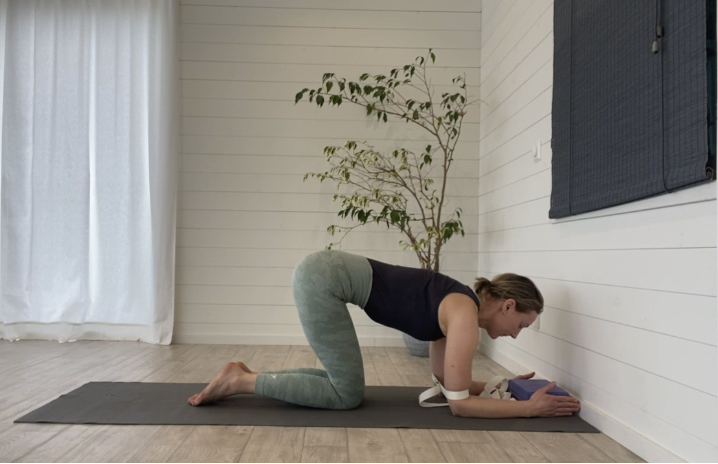How can we practice high-risk poses safely? Today we are going to start looking at Headstand. As you know from before we will look at risks, what tends to go wrong, and component parts.
Risk factors: Neck, shoulders, elbows, lower back, hamstrings
Here are a few examples of what tends to go wrong:
Most of the weight comes on the head and the neck gets compressed. Collapse in the shoulders, rounding the upper back, becoming a “banana” meaning we arch the lower back, legs rotate out and we are not using our legs enough to get the weight of our arms and head.
Before I teach Sirsasana I always teach Pincha Mauyrasana because they have similar component parts and it helps you see students’ tendencies. If the elbow stand is too hard it means that you will most like put too much weight on your head in the headstand. Building a foundation is for me very important and when you have a steady foundation everything becomes easy. But to build the foundation will require some work but nothing will move you once you have that set.
But before we even start to put weight on the arms there is another great pose you can teach is U. Trikonasana. If the practitioner can’t keep the neck even lengthening and doesn’t have an understanding of the shoulder girdle or how to create length in the lower back that is what we should work with first.
Here are two setups to work with in preparation for Pincha Mauyrasana and Sirsasana.

Here I’m holding the block between my palms and my finger is touching the wall (the block is not touching the wall). Most likely when you lift the hips up your finger is going to want to smash into the wall. This is when you need to work with chopping the forearm and pinky finger side of the hands down as well as hugging the upper arms in and sticking the shoulder blades into the body simultaneously as you are widening across the chest. As you lift the hips up your shoulders should stay above the elbows.

The block now stands up to be as close to the wall as possible. The block is only there to prevent your hands from sliding toward each other as the belt is there to keep your elbows from moving away from each other. The only difference now is that your hands are on the floor. You work on the same actions as above. I will come back and explain in more detail how we work in these two poses.
Good Luck!

